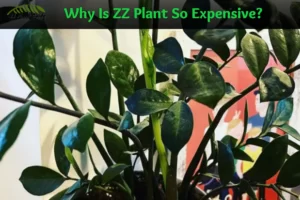Hey there fellow plant enthusiasts! Are you wondering if the trendy ZZ plant (Zamioculcas zamiifolia) is a succulent? Well, you’ve come to the right place!
In this article, we’ll take a closer look at the characteristics of succulents and how they compare to the ZZ plant. So, grab a cup of tea and let’s dive into the world of botany!
What is a Succulent?
Before we can determine if the ZZ plant is a succulent, it’s important to understand what exactly a succulent is. Succulents are a type of plant that have adapted to survive in arid or dry climates.
They store water in their leaves, stem, or roots to help them survive during periods of drought. Some common characteristics of succulents include:
- Thick, fleshy leaves or stems
- Small, shallow root systems
- Drought tolerance
- Slow growth rate
Examples of succulents include cacti, aloe, and jade plants.
The ZZ Plant: A Closer Look
Now that we have a better understanding of what a succulent is, let’s take a closer look at the ZZ plant. The ZZ plant is a tropical plant native to Eastern Africa.
It is known for its glossy, dark green leaves and its ability to thrive in low light conditions. Some key characteristics of the ZZ plant include:
- Thick, glossy leaves
- Small, shallow root system
- Tolerance of low light conditions
- Slow growth rate
When we compare the characteristics of the ZZ plant to those of succulents, we can see that they are very similar.
Both have thick, fleshy leaves, small root systems, and a slow growth rate. The ZZ plant also has the ability to store water in its leaves, making it drought tolerant.
Is the ZZ Plant a Succulent?
Based on the characteristics we’ve discussed, it’s safe to say that the ZZ plant is indeed a succulent! It may not be a cactus or an aloe, but it shares many of the same characteristics that make a plant a succulent.
Let’s take the popular succulent, the Aloe vera, and compare it to the ZZ plant.
Aloe vera is a succulent that is known for its thick, fleshy leaves that store water, allowing it to survive in dry climates. It also has a shallow root system and a slow growth rate.
When we compare this to the ZZ plant, we can see that they share many of the same characteristics. Both have thick, fleshy leaves that store water, small root systems, and a slow growth rate. This is why the ZZ plant can also be classified as a succulent.
Another example could be the cactus. Cacti are a type of succulent that are known for their thick, fleshy stems that store water, allowing them to survive in dry, desert climates. They also have small root systems and a slow growth rate.
The ZZ plant also shares these characteristics, which is why it can be considered a succulent.
Wrapping the Succulent Discussion!!
The ZZ plant is similar to other succulents like Aloe vera and cactus in many aspects and this is why it can be considered as succulent.
So, the next time someone asks you if the ZZ plant is a succulent, you can confidently say “Yes, it is!”
Read: When to Repot ZZ Plant?




